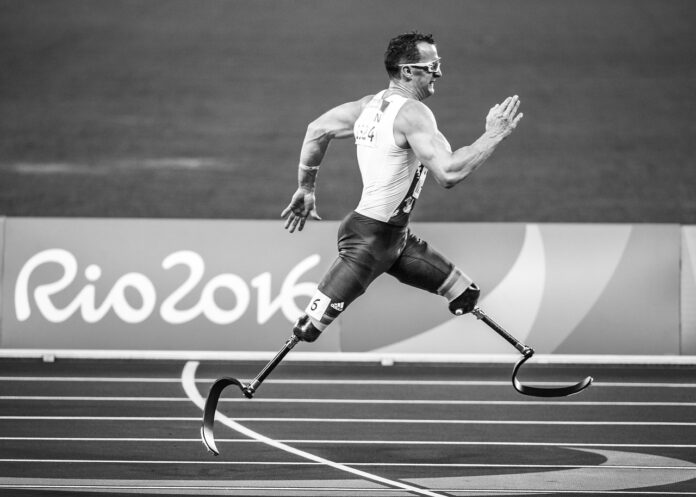A Basic Defenition: A prosthetic implant is an artificial device that is designed to replace a missing body part. A body part may be lost through accidents, amputations, disease, or a condition present at birth. And so, prosthetics allow people to have a more comfortable life and appearance.
The Basic History: Ambroise Paré was an official royal surgeon who practiced medicine on the battlefield by attempting to save, or at least treat wounded soldiers. He was disturbed by the soldiers’ reactions to his care because he saw that they would rather take their own lives than live without limbs. So, he began crafting artificial limbs, a practice that dates back to ancient Egyptians. He believed that this would give them a psychological and spiritual sense of wholeness. They were used in the Dark Ages, in ancient Greece, Rome, and Egypt. But one of the most earliest and accurately drawn references to prostheses was found in a book published by Ambroise in 1579. The very first uses of basic prosthetics were in Ancient Greece, Rome, and Egypt. Such as functional wooden toes etc. However, some more accurate documented references were found in France and other parts of Europe. The concept has remained the same over time. Its job was and is to provide a second chance to live better. Back then, people lost limbs due to infection and battle. But now, we may lose body parts due to accidents and surgical amputation. Over time, the materials have dramatically changed too. From using wood and naturally occurring adhesives, we have evolved to using electronics and metal.
Some technical information: Prosthetic devices are divided into 2 categories: Upper-extremity and lower-extremity. The Upper-extremity ones are used for different levels of amputations at specific places in the upper body, such as for shoulders, wrists, arms, and fingers. Lower-extremity prosthetics are used for – as you may have guessed – lower parts of the body, such as for hips, knees, feet, and toes. Depending on the specific needs of the patient, varying prostheses may be administered. For example, some prosthetic devices may focus on the concept of cosmesis. Cosmesis is the preservation and restoration of bodily beauty. This means that this specific device will focus on making the device look as real as possible. This could be through adding minor details such as freckles, hairs, scars, and etc. This may help restore some peace to the mind. But the more common reason for prostheses is for function. Like being able to grip objects or increased freedom of movement.
How they may be powered:
Body Powered: This method speaks for itself. Basically, your body can control the prosthetic. For example, a cable may be attached from one shoulder to the prosthetic hand. So when you move your shoulder- your hand will move too!
Motor Powered: Think of this method as using a remote control panel. For example, a prosthetic hand may have a few buttons on it – and pressing one of them could lead to gripping an object.
Myoelectric Powered: This method is one of the most recent ways to operate your prosthetic device. In simple terms, prosthetic limbs are powered by muscles in your real limb to generate electric signals and pulses. When electrodes (an electrical conductor used to make contact with a nonmetallic part of a circuit) are put on the skin, they read the muscle contractions (like a code) and sends signals to the limb to move.
The Main Parts:
The Pylon: Think of this part of the device as the skeleton. Made of light carbon-fiber composite rods, its function is to provide structural support to the rest of the device.
The Socket: This is one of the most important aspects when talking about prosthetics. It’s the part that is fitted to the real limb. It needs to be extremely precise so no irritation or damage is caused to the skin tissue. Did you know that a patient might even wear a layer of “prosthetic socks” to achieve a snuggly fit?
The Suspension System: This part works to ensure that the prosthetic limb is securely attached to the body. Although you can attach the device to the body through straps and other mechanical devices, a more common practice is through suspension and suction. This airtight seal will ensure stability.
Their effect on the world around them: Prosthetics benefited the world immensely. It allowed people to recover from the trauma of not having/losing a limb. They give people the opportunity to live comfortably and to take care of themselves. For example, arms are extremely important parts of your body. Without them, you wouldn’t be able to do anything by yourself and would always have to rely on others for the most basic tasks, like eating, writing, and even balance. Basically, have benefited our world because they gave people a second chance to live a normal life.
Its Future: The future of this invention will be having the ability to control your prosthetics with your mind. Scientists want to find a way to hook up the device with our nerves so that they connect to our brains. This will allow us to control our limbs just like we would normally. Of course, we are nowhere close to achieving this- but Elon Musk is. He has spent over 100 million dollars to pursue the development of Neurolink. Basically, the future of this invention will enable us to make prosthetic limbs as closely related as possible to real human limbs.
Links:
https://qz.com/2141720/modern-prosthetics-go-beyond-bionic-limbs-and-into-the-brain


